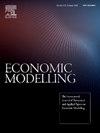Zombie firms in network: Congestion and evergreening
IF 4.7
2区 经济学
Q1 ECONOMICS
引用次数: 0
Abstract
We explore the spillover impact of zombie firms in Turkey by exploiting a rich administrative dataset that contains firm-level information on balance sheets, inter-firm sales, employment, and firm-bank level credit records. We document three key facts regarding zombie dynamics: (i) Leveraging matched firm-bank level credit registry data, we highlight the presence of an evergreening motive, leading to a misallocation of credit away from productive firms. At the same time, healthy firms in zombie-dense networks face reduced credit access. (ii) Zombie firms, which are on average less productive than nonzombie firms, impede investment and employment opportunities at healthier firms. Nonzombie firms operating in sectors with a high prevalence of zombie firms experience lower sales, assets, and productivity. (iii) Incorporating B2B sales data structured similarly to firm-level input–output linkages, our study causally establishes that greater upstream or downstream exposure to zombie firms leads to reduced sales, investment, and employment growth compared to firms without zombie connections. Increased exposure to zombie firms significantly reduces markups, value-added, productivity, and EBIT margins due to cascading effects on production technology, shifting it toward lower value-added. Additionally, a higher share of zombies in the upstream sector reduces input costs for firms due to excess production.
网络中的僵尸公司:拥塞与常青
我们通过利用一个丰富的行政数据集来探讨土耳其僵尸企业的溢出影响,该数据集包含企业层面的资产负债表信息、企业间销售、就业和企业-银行层面的信用记录。我们记录了关于僵尸动态的三个关键事实:(i)利用匹配的企业-银行级信用登记数据,我们强调了常绿动机的存在,导致生产性企业的信贷配置不当。与此同时,僵尸密集网络中的健康企业面临着信贷渠道减少的问题。(二)僵尸企业平均生产率低于非僵尸企业,阻碍了健康企业的投资和就业机会。在僵尸企业普遍存在的行业中,非僵尸企业的销售额、资产和生产率都较低。(iii)结合与企业层面投入产出联系结构相似的B2B销售数据,我们的研究发现,与没有僵尸企业联系的企业相比,上游或下游更多地接触僵尸企业会导致销售、投资和就业增长减少。由于对生产技术的级联效应,僵尸企业的风险敞口增加大大降低了利润率、附加值、生产率和息税前利润,使其转向低附加值。此外,由于生产过剩,上游行业僵尸企业的比例较高,从而降低了企业的投入成本。
本文章由计算机程序翻译,如有差异,请以英文原文为准。
求助全文
约1分钟内获得全文
求助全文
来源期刊

Economic Modelling
ECONOMICS-
CiteScore
8.00
自引率
10.60%
发文量
295
期刊介绍:
Economic Modelling fills a major gap in the economics literature, providing a single source of both theoretical and applied papers on economic modelling. The journal prime objective is to provide an international review of the state-of-the-art in economic modelling. Economic Modelling publishes the complete versions of many large-scale models of industrially advanced economies which have been developed for policy analysis. Examples are the Bank of England Model and the US Federal Reserve Board Model which had hitherto been unpublished. As individual models are revised and updated, the journal publishes subsequent papers dealing with these revisions, so keeping its readers as up to date as possible.
 求助内容:
求助内容: 应助结果提醒方式:
应助结果提醒方式:


